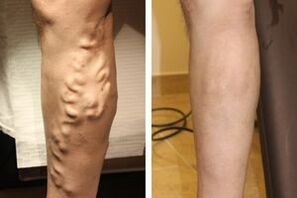
Removal of veins in the lower extremities is called the radical method of treatment. An operation to remove varicose veins in the leg can be prescribed to the patient if the use of conservative and alternative methods of therapy does not have the proper therapeutic effect and the disease continues to progress.
With the advanced form of varicose veins, surgery can solve the following problems:
- Elimination of pathological reflux (reverse flow) of blood.
- Maintain healthy sections of disease-free veins.
- Eliminate the affected areas of the veins.
Before surgery, the doctor marks the veins under ultrasound control, which allows you to determine the extent of the affected segment. Removal of affected vessels and parts of the vein is performed using a narrow probe, which is inserted through a small incision. After removal of the affected area, the risk of recurrence of the disease is low.
After surgery to remove a varicose vein, the chance of a recurrence of the disease is low.
In modern medicine, they prefer the combined phlebectomy procedure, which involves the use of several techniques at once.
The main stages of combined radical treatment are: upper or lower cross-section, short stripping, perforation vein ligation, mini-phlebectomy.
In the early stages of the disease, any of the listed procedures can be used as an independent operation. In some cases, as an alternative to some stages of classical combined phlebectomy, minimally invasive methods of treatment in the form of sclerotherapy or laser wiping may be offered.
Types of operation
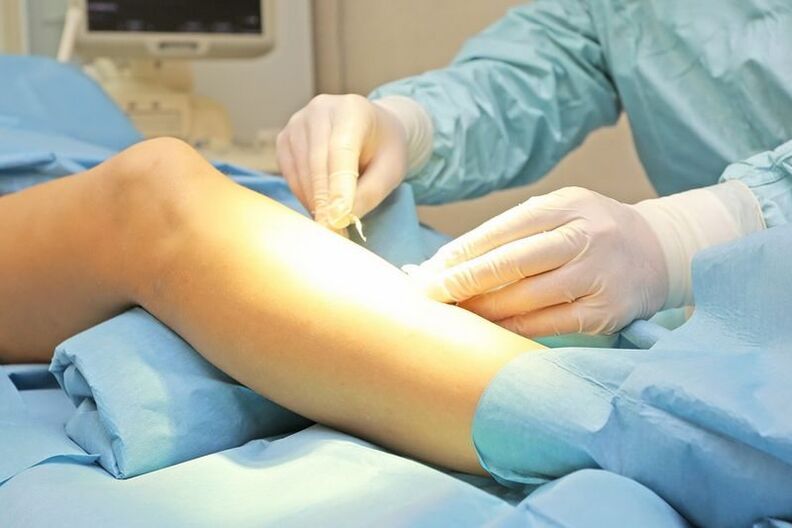
The common name for surgery to remove affected veins is phlebectomy. Modern types of this procedure:
- Applying the stripping procedure (long or short) is the gentlest technique, during which the doctor can only remove a certain part of the affected vein. The procedure is performed through a small incision along the vein.
- Laser phlebectomy is a modern method of treatment that involves the use of a laser. Thanks to this tool, the laser coagulation process takes place inside the affected vessels. The procedure is performed under local anesthesia and does not require the use of special surgical instruments. The laser is injected into a vein together with a small diameter catheter, then under the influence of the pulse small bubbles of steam are formed, which touch the walls of the vessels. As a result, the affected vein becomes part of the tissue and no longer bothers the patient.
- Endoscopic excision of the affected vein. In this case, an endoscope is inserted into the vein area and the doctor can personally analyze its condition and the degree of damage. In the future, the surgeon has the opportunity to cut the affected area.
So-called trouble-free technologies are very popular when the affected area of the vein is removed through small dotted incisions. Already 4-6 hours after manipulation, the patient can walk independently. If the development of trophic disorders is observed, then endoscopic devices are used.
The advantage of the miniflebectomy method
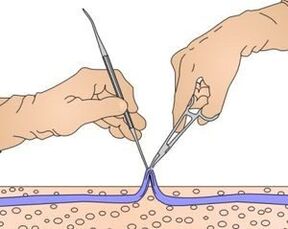
Miniflebectomy is one of the most painless and non-traumatic methods of surgical removal of affected veins. The procedure is performed in three stages: diagnosis, a small incision with a scalpel at the site of damaged blood flow, extraction of the affected area of the vein.
The operation is performed under local anesthesia, the rehabilitation period does not take much time from the patient. Wounds, bruises do not form at the puncture site, pain is disturbed in isolated cases.
Miniflebectomy is an almost painless way to get rid of varicose veins, the recovery period after surgery is minimal.
To minimize the risk of bruising and bruising, surgery can be performed using tumescent anesthesia, which in addition to anesthesia includes a substance that has a vasoconstrictive effect. After the procedure, the patient is discharged after a few hours, while there is no characteristic intoxication of general anesthesia as well as pain.
Crocectomy
The concept of "crossectomy" means the subsequent ligation and junction of a small or large saphenous vein. As an independent operation, such a procedure can be performed only in urgent cases, when there is a risk of spreading an acute form of thrombosis.
To date, there are smoother alternative procedures for cross-resection - performing endovascular laser ablation and radiofrequency ablation.
The advantages of the techniques are: the possibility of refusing general anesthesia, outpatient treatment, the absence of cosmetic defects in the form of cuts and scars.
Among the disadvantages, one can notice a higher probability of recurrence of the disease and a rather high cost of these procedures.
training
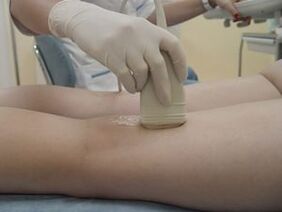
Surgery for varicose veins of the lower extremities is performed after a preliminary examination of the patient and performing an internal examination.
The following types of exams can be assigned:
- Ultrasound of the leg veins.
- General blood test.
In the future, the doctor will conduct an oral study to identify possible contraindications to surgery. A preliminary examination allows you to choose the optimal type of surgical procedure or, if necessary, combine several known methods at once.
It is very important that the patient understands how to behave correctly before and after the procedure. Before surgery, it is recommended that you refrain from taking medications, which include acetylsalicylic acid, because of the risk of bleeding. On the day of surgery, it is not necessary to prepare for the procedure especially carefully - you just need to get rid of the hairs in the operated limb area.
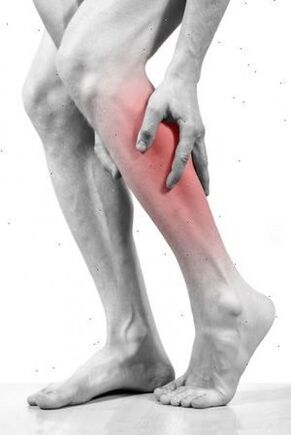
When is an operation needed?
Patients wondering if surgery is needed for varicose veins of the lower extremities should understand that such a radical method of therapy is necessary in the following cases:
- Rapid progression of the disease, which is accompanied by severe pain.
- Development of varicose thrombophlebitis of 1-4 degrees.
- Feeling of heat and intense burning in the region of the veins.
- Spread of varicose veins over the kneecaps.
- Visible formation of a swollen vein, aesthetically unattractive.
Surgery is also indicated for the formation of long-term non-healing trophic disorders (ulcers), for which conservative therapy does not have the proper therapeutic effect.
Contraindications and possible consequences

It is mandatory to consider the contraindications and possible consequences of surgery.
Surgical intervention can not be performed if the patient has a history of diseases such as hypertension, heart rhythm disorders, coronary heart disease, the presence of infectious diseases in the acute phase, inflammatory dermatological diseases of the foot.
Surgery should not be performed in late pregnancy, as well as in elderly patients with weakened immunity.
Patients should consider the possible complications as well as the consequences of the surgical intervention:
- Violation of the sensitivity of the operated limb as a result of damage to the nerve endings.
- Permanent or persistent numbness in the ankle area.
- Suppuration formation.
- Development of bleeding of varying intensity.
- Rehabilitation of swollen veins at a site above or below postoperative wounds.
- Pain syndrome does not bother all patients and occurs if nerve endings are affected. Normalization of sensitivity in most cases occurs independently, without the use of any medication.
- Hematomas and bruises at the site of surgery can be troubling. In this case, drugs from the group of anticoagulants for topical use may be prescribed. If the patient has very delicate and sensitive skin, then the traces of bruising can continue for 1-1, 5 months.
- The development of edema may indicate that the patient does not follow the doctor's instructions, does not follow the rest regime, and exposes the body, including the lower limbs, to excessive physical exertion.
Strictly follow the doctor's recommendations, it depends on how quickly the consequences of the operation will pass.
Therefore, before deciding whether it is worth doing surgery for varicose veins, you should consider all the possible risk factors: fully weigh the pros and cons. Surgery should be performed in cases where the manifestations of the disease bother patients for a long time and significantly worsen the quality of life.
It is also necessary to consult only with experienced and qualified doctors who perform such operations: phlebologists, angiosurgeons.
Recovery period
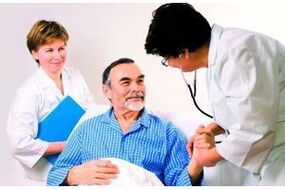
After surgery, the patient is advised to follow all the instructions of the attending physician so that the recovery period takes as little time as possible and you can quickly return to your normal lifestyle. During the first 48 hours, patients are strictly forbidden to:
- Use of alcoholic beverages.
- Motor transport management.
- Bathing in a hot tub.
- Excessive physical activity.
In the first days after surgery there may be complaints of pain in the legs as well as an increase in body temperature. In this case, medical methods of therapy are included, physiotherapy is prescribed. The patient does not always have to be in a horizontal position. You need to walk a little every day to restore blood flow.

In the future, the implementation of the following recommendations also minimizes the risk of developing these complications after surgery.
- Hydroprocedure, massage, therapeutic exercises and other methods of physiotherapy, which will be prescribed by the attending physician. Such procedures prevent the formation of blood clots, normalize blood flow.
- During the first months, both limbs will need to be wrapped in special elastic underwear or compression stockings.
- Use drugs from the group of phlebotonics, angioprotectors. With the development of inflammatory processes, antibacterial drugs can be prescribed. Painkillers are used to relieve pain.
- If sutures are placed, they can be removed 7 days after the procedure.
- If the patient is overweight, then it should return to normal in order to reduce the load on the veins.
- It is recommended to give preference to loose clothing made of natural fabrics and comfortable shoes. Wearing high heels is contraindicated.
- At home, you should try to keep your feet up using rollers or pillows.
The rehabilitation period can last up to several weeks, during which time the patient will be given a special medical leave.
Modern methods of removing varicose veins involve a rehabilitation period of only a few days, but they are more expensive than usual.
In the future, the patient should come for a second examination and undergo an additional examination so that the doctor can evaluate the effectiveness of the treatment.
Operating cost
Phlebectomy is performed both in public clinics and in plastic surgery centers, the purpose of which is to eliminate aesthetic imperfections.
Patients are interested in how much varicose vein surgery costs.
It all depends on the clinic and the qualifications of the doctor performing the procedure, as well as the degree of disease development and the complexity of the proposed surgery. The final place in the pricing is not given to the city and region in which the patient intends to perform the procedure.
A number of clinics include a preoperative examination, as well as a rehabilitation period, due to cost.
Forecasts by experts

The application of the combined phlebectomy procedure does not exclude the possibility of a recurrence of the disease. After the use of radical methods of treatment, a recurrence of varicose veins is possible due to the physiological characteristics of the body (structure of blood vessels and veins), or a violation of the technique of performing the procedure (if the doctor can not. Normalizationof the permeability of the affected vein). The risk of disease recurrence is observed in approximately 15-20% of cases. In case the patient notices manifestations of a recurrent recurrence of the disease, you should consult a doctor as soon as possible.
Only an experienced specialist will help you suggest exactly which surgery to remove varicose veins to choose from, as well as give helpful recommendations that will need to be followed during the recovery period. If you do not consult a doctor in a timely manner, the consequences can be the most miserable and irreversible.


















